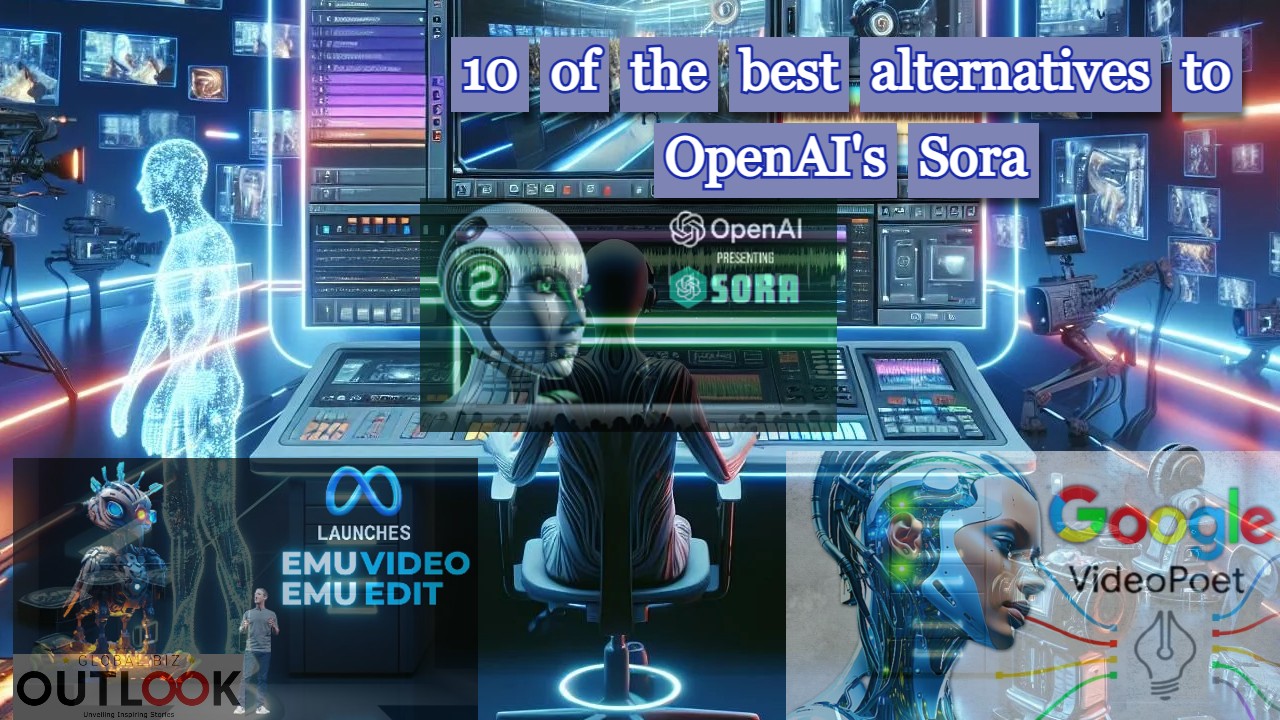The closest rival to Sora from Google DeepMind is Lumiere.
Video-generation skills become the next step as LLMs progress. Sora from OpenAI has dazzled with its ability to create incredibly lifelike videos. Here are a few strong substitutes that you can try out and utilize.

With just written descriptions, users may create complete worlds, animations, and tales with RunwayML Gen 2. Additionally, users can play around with reference photos, adjusting their creative process with several prompting modes and advanced settings.
The Multi-Motion Brush, the recent addition, improves the control over motion in generated videos. Gen-2 is available on the Runway mobile app and web platform, offering mobility for creative pursuits while on the road.
Users can choose the created video that best fits their vision by previewing and downloading it. But there are costs to be taken into account as well. Gen-2 uses a credit system, and each second of video creation costs $5.

A text-to-video program called Pika Labs uses artificial intelligence to create animations and videos from simple text inputs. Pika can produce videos in a variety of formats, including animated cartoons, anime, and cinematic formats. Pika’s capabilities extend beyond text-to-video conversion; it can also convert photos to videos and vice versa.
With Pika’s latest release, users can now give their avatars voices by using the lip-sync feature, which automatically synchronizes words with actions. “Expand canvas” and “modify region” are two more features.

Lumiere, a product of Google DeepMind, is the closest rival to Sora in that it also produces realistic, cohesive films up to five seconds long straight from written descriptions.
Lumiere uses a Space-Time Diffusion Model, while many text-to-video algorithms create videos frame-by-frame. Lumiere can now create the full length of the video in a single pass thanks to this method, which improves coherence and consistency all around.
With capabilities like cinemagraphs, image-to-video generation, stylized generation, and inpainting, Lumiere stands out from other models due to its adaptability and customizability.

A text-conditional video generating system based on a cascade of video diffusion models is called Imagen Video from Google. This model can generate 24 frames per second, 1280 x 768 movies. The model not only produces excellent films, but it also provides a great deal of control and a wide perspective on the world.
It has a strong grasp of 3D objects and can create a wide range of text animations and films in many artistic styles.

You may make quick videos with Meta’s Emu Video by using text descriptions as your guide. It makes use of the diffusion model methodology. Accordingly, it begins with a noisy image and gradually improves it in response to the text prompt until producing the final video frame by frame.
It uses a two-step procedure. Initially, an image is created using the text given as a guide. The model then produces a multi-frame video using that image and the prompt once more.
This model outperforms models such as Make-a-Video, Imagen-Vide, Cog Video, Gen2, and Pika, producing visually striking 512×512 four-second films at 16 frames per second and better.

A group of researchers from Beijing’s University of Tsinghua has unveiled CogVideo, a large-scale pretrained generative model for text to video. CogVideo builds upon a pre-trained text-to-image model called CogView2 and uses a multi-frame-rate hierarchical training technique.

Google Research created VideoPoet, an LLM designed primarily for the creation of videos. It can create two-second films using a variety of input types, such as audio snippets, text descriptions, pre-existing photos, and videos.
You can have some influence over the generating process with VideoPoet. To improve the final video production, try varying the text instructions, using reference photos, or adjusting certain settings. It also has features like applying visual effects and zero-shot stylization.

An open-source program called Stable Video Diffusion from Stability AI raises ideas for live-action cinematic productions by transforming text and image inputs into vibrant scenes. It has two image-to-video models with customizable frame rates ranging from 3 to 30 frames per second and can produce 14 and 25 frames respectively.

Make-A-Video, created by Meta AI, converts advancements in Text-to-Image (T2I) creation to Text-to-Video (T2V) without the need for text-video data. It acquires knowledge of motion from unsupervised video footage and visual and multimodal representations from coupled text-image data.
10. Magic VideoV2

Magic Video 2, or MagicVideo, is a framework for creating videos that is efficient and relies on latent diffusion models. It is developed by ByteDance. With the integration of text-to-image, image-to-video, video-to-video, and video frame interpolation, MagicVideo-V2 offers a novel approach to producing fluid and aesthetically pleasing videos.















